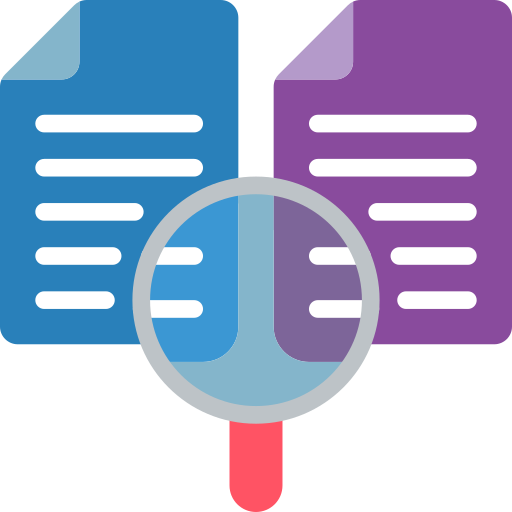
Ever feel like something you’re reading just sounds… off? That’s probably AI-generated content. The rise of artificial intelligence in writing has made creating content faster—but not always better. This is where the concept of converting AI text to human text comes into play. Let’s break down why it matters, how it works, and how you can master the art.
Understanding AI-Generated Text
The Rise of AI in Content Creation
AI tools like ChatGPT, Jasper, and Copy.ai are transforming how content is produced. They’re fast, accurate (most of the time), and can mimic human style pretty well.
Characteristics of AI-Generated Text
But here’s the thing—AI often sounds too formal, too polished, or just plain robotic. It lacks the quirks, voice, and emotional depth that real human writing naturally includes.
What is “AI Text to Human Text” Conversion?
The Concept Explained Simply
AI text to human text means taking a piece of writing generated by an AI and tweaking it so it reads naturally, like a real person wrote it. It’s more than just fixing grammar—it’s about restoring the soul of the content.
Why It’s More Than Just Rewriting
You’re not just rephrasing sentences. You’re adding context, emotional cues, and personality. You’re making it sound like you, not a machine.

Why People Convert AI Text to Human Text
Avoiding Detection by AI Text Detectors
Let’s be honest—some people use AI to write essays or articles, but don’t want to get caught. Converting AI text to human text helps dodge detection tools like GPTZero or Originality.AI.
Enhancing Readability and Engagement
Even if you’re not trying to “hide” anything, AI text can feel flat. Humanizing it keeps readers hooked and makes your content actually enjoyable to read.
Maintaining Authenticity and Trust
People can tell when something doesn’t feel genuine. To build trust with your audience, your content needs to feel personal and real.
Key Differences Between AI Text and Human-Written Content
Style and Tone
AI tends to stick to the rules. Humans, on the other hand, break them all the time—and that’s what makes our writing interesting.
Flow and Natural Language
Human writing has a natural rhythm. It might start with a story, jump into a thought, then circle back. AI is usually too structured and predictable.
Use of Personal Experiences
AI can’t draw from real life. Humans can talk about that time they got lost in a new city or made a terrible coffee. That’s what makes writing relatable.
How to Humanize AI Text Effectively
Add Personality and Voice
Infuse your unique tone into the writing. Are you funny? Sarcastic? Super chill? Let that show through your words.
Use Everyday Language
Don’t write like a textbook. Use contractions, slang, and simple words. You’re talking to a human, not a robot.
Break the Perfect Grammar Rule
Perfect grammar can actually sound robotic. It’s okay to start a sentence with “And” or “But,” and to end one with a preposition.
Inject Emotion and Empathy
AI doesn’t feel. You do. Share opinions, ask questions, and show care—whether you’re explaining something or telling a story.

Tools That Help Convert AI Text to Human Text
Manual Editing and Proofreading
Old school, but gold. The best way to humanize AI text is to read it out loud and fix what feels off.
AI Humanizer Tools
Ironically, there are now tools designed to humanize AI writing. Tools like Humanizer Pro or EditPad can help, but they still need a personal touch.
Combining AI and Human Review
Let AI give you a draft, then rewrite parts, add stories, tweak the tone, and run it through grammar tools like Grammarly or Hemingway App.
Best Practices for “AI Text to Human Text” Transformation
Know Your Audience
Are you writing for students, professionals, or casual readers? Your tone and language should match your reader’s vibe.
Don’t Just Paraphrase—Transform
Rewriting word-for-word won’t do the trick. Change the flow, insert new thoughts, remove repetitive bits, and make it yours.
Test for Authentic Voice
When in doubt, ask someone to read your content. If they say, “You definitely wrote this,” you nailed it.

Real-World Uses and Examples
Blogging and Content Marketing
Bloggers use AI to speed things up but always give it a human makeover to keep readers coming back.
Academic Writing and Assignments
Students might use AI to brainstorm ideas, then convert the rough text into natural-sounding essays that reflect their own voice.
Product Descriptions and Branding
E-commerce sites use AI to draft descriptions, but human writers tweak them to match brand tone and appeal emotionally to customers.
In a world where AI is becoming the new normal, knowing how to convert AI text to human text is a must-have skill. Whether you’re a writer, student, marketer, or just someone who wants to sound real online—making your content feel human matters more than ever. Remember, AI is a tool, but it’s your personality and experience that make your content shine.
FAQs About The AI Text to Human Text
What does “AI text to human text” actually mean?
It means editing AI-generated content to make it sound more natural, relatable, and human-written.
Is it legal to use AI-generated content and humanize it?
Yes, but always check content policies if you’re submitting work to schools, clients, or publications.
Can AI detectors still catch humanized text?
If done poorly, yes. But well-humanized content that adds emotion, opinion, and voice is hard to detect.
Are there free tools to help humanize AI text?
Yes, tools like Hemingway Editor, Grammarly, and even ChatGPT with the right prompts can assist.
How long does it take to humanize AI text?
Depends on the length and quality of the original text, but usually 15–30 minutes for a solid rewrite of 500–700 words.







